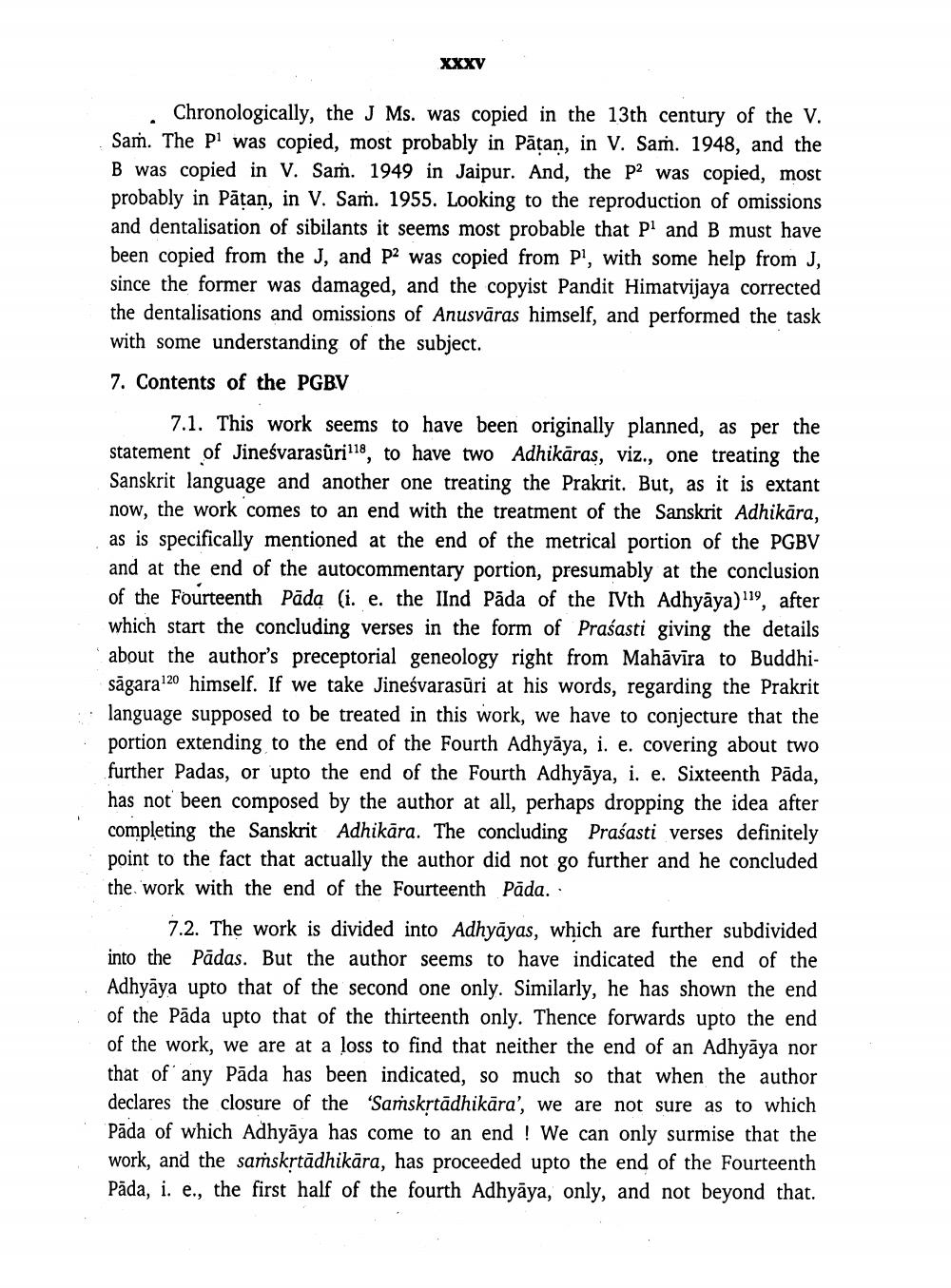________________ xxxy . Chronologically, the J Ms. was copied in the 13th century of the V. Sam. The p was copied, most probably in Patan, in V. Sam. 1948, and the B was copied in V. Sam. 1949 in Jaipur. And, the p2 was copied, most probably in Patan, in V. Sam. 1955. Looking to the reproduction of omissions and dentalisation of sibilants it seems most probable that pl and B must have been copied from the J, and p2 was copied from P!, with some help from J, since the former was damaged, and the copyist Pandit Himatvijaya corrected the dentalisations and omissions of Anusvaras himself, and performed the task with some understanding of the subject. 7. Contents of the PGBV 7.1. This work seems to have been originally planned, as per the statement of Jinesvarasuri 18, to have two Adhikaras, viz., one treating the Sanskrit language and another one treating the Prakrit. But, as it is exta now, the work comes to an end with the treatment of the Sanskrit Adhikara, as is specifically mentioned at the end of the metrical portion of the PGBV and at the end of the autocommentary portion, presumably at the conclusion of the Fourteenth Pada (i. e. the Ilnd Pada of the IVth Adhyaya)", after which start the concluding verses in the form of Prasasti giving the details about the author's preceptorial geneology right from Mahavira to Buddhisagara 20 himself. If we take Jinesvarasuri at his words, regarding the Prakrit language supposed to be treated in this work, we have to conjecture that the portion extending to the end of the Fourth Adhyaya, i. e. covering about two further Padas, or upto the end of the Fourth Adhyaya, i. e. Sixteenth Pada, has not been composed by the author at all, perhaps dropping the idea after completing the Sanskrit Adhikara. The concluding Prasasti verses definitely point to the fact that actually the author did not go further and he concluded the work with the end of the Fourteenth Pada. 7.2. The work is divided into Adhyayas, which are further subdivided into the Padas. But the author seems to have indicated the end of the Adhyaya upto that of the second one only. Similarly, he has shown the end of the Pada upto that of the thirteenth only. Thence forwards upto the end of the work, we are at a loss to find that neither the end of an Adhyaya nor that of any Pada has been indicated, so much so that when the author declares the closure of the 'Samskstadhikara', we are not sure as to which Pada of which Adhyaya has come to an end ! We can only surmise that the work, and the samskrtadhikara, has proceeded upto the end of the Fourteenth Pada, i. e., the first half of the fourth Adhyaya, only, and not beyond that.




